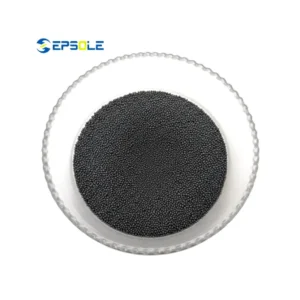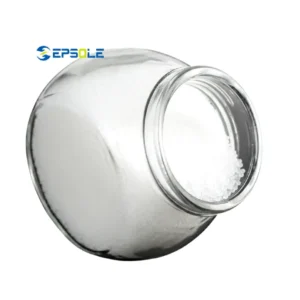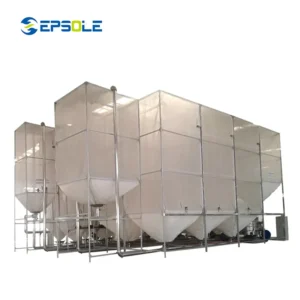Expanded polystyrene (EPS) foam, a ubiquitous material in packaging and construction, possesses a unique set of properties that make it incredibly versatile. This blog post delves into the comprehensive world of EPS material properties, exploring its thermal insulation, lightweight nature, and structural integrity. We’ll unravel the science behind its performance, providing an in-depth understanding of its capabilities.
From its exceptional shock absorption to its cost-effectiveness, EPS offers a wide array of benefits. This guide aims to equip you with the knowledge to make informed decisions about EPS applications, whether for industrial purposes or everyday use. We’ll discuss its strength, durability, and how its physical attributes contribute to its widespread adoption.
What Is Expanded Polystyrene (EPS)
Expanded polystyrene (EPS) is a rigid, closed-cell foam material produced from solid polystyrene beads. These beads are expanded using a blowing agent, typically pentane, which causes them to increase significantly in volume. This process results in a lightweight material composed primarily of air, trapped within the polystyrene matrix, giving EPS its characteristic thermal insulation properties.
EPS is widely used in various applications, including packaging, construction, and insulation, due to its versatility and cost-effectiveness. Its lightweight nature reduces transportation costs, and its excellent thermal insulation properties make it ideal for use in building insulation and temperature-sensitive packaging. Additionally, EPS’s ability to absorb shock makes it a popular choice for protecting fragile items during shipping.
EPS Foam Material Properties

Understanding the nuanced properties of EPS foam is crucial for optimizing its applications across diverse industries. This material, derived from polystyrene, undergoes an expansion process that imbues it with unique characteristics. We will explore those characteristics here, starting with its base components.
Styrene Monomer (liquid) and Expandable Polystyrene (solid)

The journey of EPS begins with styrene monomer (liquid), a petrochemical that serves as the raw material. This liquid is polymerized to create expandable polystyrene (solid), which takes the form of small beads. These beads contain a blowing agent, typically pentane, which is crucial for the subsequent expansion process. The size and quality of these beads directly influence the final properties of the EPS foam.
- Styrene monomer is the starting material.
- Expandable polystyrene beads contain a blowing agent.
- Bead quality impacts final EPS properties.
The transition from liquid monomer to solid expandable beads is a critical step in determining the uniformity and consistency of the final EPS foam product. This initial phase sets the stage for the expansion process that ultimately defines EPS’s unique characteristics.
Polystyrene (solid) and Thermal Insulation
Once the expandable polystyrene beads are processed, they become polystyrene (solid) foam. This transformation occurs through the application of heat, which activates the blowing agent, causing the beads to expand significantly. The resulting closed-cell structure traps air, making EPS foam an excellent thermal insulator. This property is quantified by its R-value, which measures its resistance to heat flow. The higher the R-value, the better the insulation.
- Polystyrene foam has a closed-cell structure.
- High R-value reduces energy consumption.
- Maintains consistent temperatures.
This property is ideal for construction applications, such as wall and roof insulation, and for packaging temperature-sensitive goods. EPS foam’s thermal insulation capabilities contribute to energy efficiency in buildings and help preserve the quality of perishable items during transit. Its lightweight nature also minimizes the energy required for transportation, further enhancing its sustainability.
Lightweight and Structural Integrity
EPS foam, now in its solid form, is remarkably lightweight, primarily due to its high air content. This property reduces transportation costs and makes it easy to handle during installation. Despite its low density, EPS can offer significant structural integrity, particularly when used in composite structures like structural insulated panels (SIPs).
- Low density enables easy handling.
- High strength-to-weight ratio.
- Adjustable density for tailored structural integrity.
The structural integrity of EPS foam can be tailored by adjusting its density during the manufacturing process. Higher density EPS offers greater compressive strength and impact resistance, making it suitable for applications requiring robust support.
Moisture Resistance and Chemical Inertness
Polystyrene (solid) foam exhibits good moisture resistance, preventing water absorption and maintaining its insulating properties in humid environments. It is also chemically inert, meaning it does not react with most common substances, making it suitable for various packaging and construction applications.
- Low water absorption prevents degradation.
- Chemically stable for longevity.
- Resistant to rot and decay in various environments.
The moisture resistance of EPS foam is particularly beneficial in below-grade applications, such as foundation insulation, where exposure to dampness is common. Its chemical inertness ensures that it does not degrade or leach harmful substances, contributing to its long-term durability.
Shock Absorption and Cushioning
The cellular structure of the final Polystyrene (solid) foam provides excellent shock absorption, making it ideal for packaging fragile items. It effectively cushions impacts, protecting products from damage during transit. The material’s ability to compress and rebound minimizes the transfer of force.
- High impact resistance protects goods.
- Reduces damage during transport.
- Customizable packaging solutions.
This shock absorption capability extends to its use in protective gear, such as helmets and sports equipment, where it helps mitigate the effects of impacts. The material’s versatility allows for the creation of custom packaging solutions tailored to the specific needs of various products.
What Material Composes Expanded Polystyrene?
Expanded Polystyrene (EPS) is a lightweight, rigid, cellular plastic material widely used for insulation and packaging. The material is composed mainly of polystyrene, a polymer made from styrene monomers. Here’s a breakdown of the key components:
Polystyrene Polymer: The primary component is polystyrene, which is a synthetic aromatic polymer made from the monomer styrene. The polymerization process creates a long chain of repeating styrene units.
Pentane (or other blowing agents): During the manufacturing process, a blowing agent is added to the polystyrene beads. In the case of EPS, the most common blowing agent is pentane. This agent vaporizes when exposed to heat, forming gas bubbles within the plastic, which leads to the expansion of the material.
Additives: Various additives may be included to enhance specific properties of the expanded polystyrene, such as flame retardants for fire resistance or stabilizers for improved durability.
The expanded polystyrene manufacturing process involves heating the polystyrene beads with the blowing agent, causing them to expand and fuse together. The result is a lightweight, rigid foam material with a high insulation capacity. EPS is commonly used in applications like packaging materials, insulation for buildings, and as a core material in composite structures.
How Does Expanded Polystyrene Differ From Other Forms of Polystyrene?
Polystyrene, a versatile polymer, takes on various forms, each with distinct properties and applications. Expanded polystyrene (EPS) stands out due to its unique manufacturing process and resulting characteristics. Understanding these differences is crucial for selecting the appropriate polystyrene type for specific needs.
Manufacturing Process
EPS is produced by expanding polystyrene beads with a blowing agent, typically pentane. This process creates a foam-like material with a cellular structure, trapping air within the polystyrene matrix. In contrast, solid polystyrene, such as high-impact polystyrene (HIPS) or general-purpose polystyrene (GPPS), is manufactured through extrusion or injection molding without the expansion process. This results in a denser, non-cellular material.
The expansion process in EPS significantly alters its physical properties, creating a lightweight material with excellent thermal insulation. Solid polystyrene, lacking this expansion, retains a more compact structure, making it denser and less effective as an insulator.
Physical Properties
EPS exhibits a significantly lower density compared to solid polystyrene forms. This lower density is due to the high air content within its cellular structure, contributing to its lightweight nature. Consequently, EPS is often used in packaging and insulation, where its lightweight and thermal properties are advantageous. Solid polystyrene, being denser, offers higher impact resistance and structural strength, making it suitable for applications requiring durable, rigid materials.
Furthermore, EPS is known for its excellent thermal insulation, attributed to the trapped air within its cells. Solid polystyrene, without this cellular structure, has poorer thermal insulation properties. This difference in physical properties dictates their respective applications.
Applications
Due to its lightweight and thermal insulation properties, EPS is widely used in construction for insulation, packaging for fragile goods, and as a core material in structural insulated panels (SIPs). Solid polystyrene, on the other hand, is utilized in applications requiring rigidity and impact resistance, such as consumer electronics housings, toys, and disposable cutlery.
The choice between EPS and solid polystyrene depends on the specific requirements of the application. If thermal insulation and lightweight properties are essential, EPS is the preferred choice. For applications demanding structural strength and impact resistance, solid polystyrene forms are more suitable.
What Is the Use of Expanded Polystyrene?

Expanded Polystyrene (EPS) serves a multitude of purposes across various industries, thanks to its unique combination of lightweight nature, thermal insulation, and shock-absorbing properties. Understanding its diverse applications is key to appreciating its versatility.
Packaging and Protection
EPS is extensively used in packaging to protect fragile and sensitive items during transportation and storage. Its ability to absorb shock and cushion impacts minimizes damage to products, ranging from electronics and appliances to delicate glassware and medical equipment. Custom-molded EPS packaging provides a secure and form-fitting solution, ensuring items remain stable and protected.
The lightweight nature of EPS reduces shipping costs, making it an economical choice for packaging. Its thermal insulation properties also make it ideal for packaging temperature-sensitive goods, such as food and pharmaceuticals, maintaining consistent temperatures during transit.
Construction and Insulation
In the construction industry, EPS is primarily used for thermal insulation in walls, roofs, and foundations. Its high R-value, which measures its resistance to heat flow, contributes to energy efficiency in buildings, reducing heating and cooling costs. EPS is also used as a core material in structural insulated panels (SIPs), providing both insulation and structural support.
EPS’s moisture resistance and durability make it suitable for below-grade applications, such as foundation insulation. Its lightweight nature simplifies installation, reducing labor costs and construction time. Furthermore, it’s used in creating insulated concrete forms (ICFs), contributing to energy-efficient and durable buildings.
Other Applications
Beyond packaging and construction, EPS finds applications in various other sectors. Its buoyancy makes it suitable for flotation devices and marine applications. In art and design, EPS is used for creating sculptures, displays, and props due to its ease of shaping and lightweight nature.
EPS is also used in automotive and aerospace industries for lightweight structural components and insulation. In the medical field, it’s used for packaging sensitive medical supplies and equipment. Its versatility and cost-effectiveness make EPS a valuable material across a wide range of industries.
What Are the Most Common Applications of Expanded Polystyrene in Everyday Products?
Expanded Polystyrene (EPS) has become an integral part of our daily lives, finding its way into numerous everyday products due to its versatile properties. Its prevalence stems from its lightweight nature, excellent insulation, and cost-effectiveness, making it suitable for a wide range of applications.
Packaging and Food Service
One of the most common applications of EPS is in packaging, particularly for protecting fragile items during shipping. Electronics, appliances, and glassware are often encased in custom-molded EPS to prevent damage from impacts. In the food service industry, EPS is widely used for disposable containers, cups, and plates due to its thermal insulation, which helps maintain food and beverage temperatures.
EPS’s ability to be molded into various shapes and sizes makes it ideal for protecting diverse products. Its lightweight nature also reduces shipping costs, making it a cost-effective packaging solution.
Insulation and Construction
EPS is a staple in the construction industry, primarily used for thermal insulation in walls, roofs, and foundations. Its high R-value contributes to energy efficiency in buildings, reducing heating and cooling costs. EPS is also used in insulated concrete forms (ICFs) and structural insulated panels (SIPs), providing both insulation and structural support.
Its moisture resistance and durability make it suitable for below-grade applications, such as foundation insulation. The lightweight nature of EPS simplifies installation, reducing labor costs and construction time.
Recreational and Consumer Goods
EPS is also found in various recreational and consumer goods. It’s used in the production of surfboards, bodyboards, and flotation devices due to its buoyancy and lightweight nature. In the automotive industry, EPS is used for interior components and cushioning.
Coolers and picnic boxes utilize EPS’s thermal insulation to maintain food and beverage temperatures. Additionally, EPS is used in crafting and model making, where its ease of cutting and shaping allows for intricate designs.
What Are the Different Types of Expanded Polystyrene?

Expanded Polystyrene (EPS) isn’t a monolithic material; it comes in various types, each tailored for specific applications. These variations primarily revolve around density and manufacturing adjustments, influencing their physical properties and suitability for different uses.
Here are many EPS foam types that you can get from us.
Standard EPS
Standard EPS is the most common type, widely used in packaging and insulation. It offers a balance of cost-effectiveness and performance, providing adequate thermal insulation and cushioning for general applications. This type is often seen in disposable coolers, packaging inserts, and basic construction insulation.
Standard EPS is characterized by its typical density range and is suitable for applications where extreme structural integrity or specialized performance is not required. It is easy to mold and shape, making it versatile for a wide range of products.
High-Density EPS
High-density EPS, also known as rigid EPS, is manufactured with a higher density, resulting in increased compressive strength and durability. This type is used in applications requiring greater structural support, such as structural insulated panels (SIPs) and insulated concrete forms (ICFs). It can withstand higher loads and impacts, making it suitable for construction and industrial applications.
The increased density enhances its thermal performance and moisture resistance, making it suitable for demanding environments. High-density EPS is often used in applications where long-term durability and structural integrity are crucial.
Flame-Retardant EPS
Flame-retardant EPS is treated with additives to reduce its flammability, making it suitable for applications where fire safety is a concern. This type is often used in construction for insulation and in packaging for sensitive electronic equipment. It meets specific fire safety standards and regulations.
The flame-retardant properties are achieved by incorporating chemicals that inhibit the spread of fire. This type provides an added layer of safety in environments where fire hazards are present.
Molded EPS
Molded EPS refers to products that are custom-shaped to fit specific applications. This includes packaging inserts, custom insulation, and shaped components for various industries. The molding process allows for intricate designs and precise dimensions, ensuring a perfect fit for the intended use.
Molded EPS can be produced in various densities and with flame-retardant properties, depending on the application’s requirements. This versatility makes it a popular choice for custom solutions.
Conclusion
Expanded Polystyrene (EPS) foam, with its unique blend of lightweight nature, thermal insulation, and shock absorption, stands as a versatile material across numerous industries. Understanding its properties, from its raw form as styrene monomer to its final, expanded solid state, reveals its adaptability. This guide has illuminated the key characteristics that make EPS a go-to choice for packaging, construction, and beyond.
The material’s ability to be tailored through density adjustments and additive treatments, like flame retardants, further broadens its application spectrum. From protecting fragile goods to insulating buildings, EPS demonstrates a remarkable range of functionalities. Its cost-effectiveness and ease of processing contribute to its widespread adoption, making it a staple in everyday products.
By comprehending the intricacies of EPS material properties, you can make informed decisions about its suitability for your specific needs. Whether for industrial applications or consumer goods, EPS offers a reliable and efficient solution. Ready to leverage the unique properties of EPS for your next project? Contact Epsole today for wholesale EPS materials and experience the difference in quality and service.



